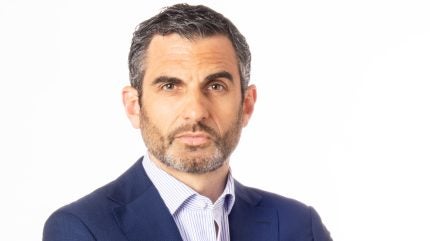
The breadth of product innovation within the beauty and cosmetics industry calls for a wide range of packaging solutions, as Berlin Packaging | Premi Industries’ general manager Vivien Charrey asserts.
From eyeshadow palettes to lipsticks, beauty products require packaging concepts that are both durable and malleable to protect liquid, powder and cream formulations.

Discover B2B Marketing That Performs
Combine business intelligence and editorial excellence to reach engaged professionals across 36 leading media platforms.
Beauty and fragrance specialist Berlin Packaging | Premi Industries is developing its portfolio of beauty offerings through a central solution: refillable packaging.
Charrey dissects how refillable solutions are sating consumer demand for sustainable packaging and the research and development (R&D) that makes this possible for brands.
Beauty packaging trends
Attempting to pin down the ever-expanding segment of beauty packaging, Charrey explains that Berlin Packaging | Premi Industries has identified the key trends that will drive this segment.
“As sustainability requirements emerge, there will be growing pressure to reduce packaging waste through regulations that are in the process of being drafted but will become increasingly stricter, ” he says.

US Tariffs are shifting - will you react or anticipate?
Don’t let policy changes catch you off guard. Stay proactive with real-time data and expert analysis.
By GlobalData“Secondly, the growth of e-commerce may lead to a convergence of primary and secondary packaging and to new designs that facilitate the demand for greater automation of logistics processes.”
Alongside these factors, changing consumer preferences are a point of consideration within packaging development. “These are increasingly driven by factors such as comfort, personalisation and value,” explains Charrey. This is particularly important for “hero products” which are flagship products that introduce consumers to a brand.
This must be balanced alongside the increasing costs in the packaging value chain, resulting in reduced retail sales margins.
The final trend is technologies such as AI, which Charrey affirms can “simplify the entire packaging design process and help companies in reducing material waste, thanks to a precise monitoring of design and material selection phases.”
Refillable solutions have a role to play in each of these industry trends by reducing material waste, increasing customer loyalty and imposing consistency in packaging R&D.
Refillable packaging R&D
Berlin Packaging | Premi Industries is seeing increased demand from brands to promote packaging reuse and reduce material usage and emissions, Charrey says.
The company has invested heavily in R&D and production units to aid the development of its refillable beauty solutions.
For fragrances, its Euphoria collection of refillable glass bottles and the Refill Twist cap are aimed at helping consumers easily and safely reuse perfume bottles.
The Double Glass Refill & Go is targeted towards premium skincare and makeup segments and the Luxe Refill allows consumers to reuse the outer glass jar and its accessories, while the glass mouth design houses mono-material PP (polypropylene).
Design is crucial to determining success
As Charrey confirms: “In recent years, we are experiencing a change in packaging from a simple container to a real selling point, so the design is crucial in determining the success of a product.”
The company uses its “design consciousness” principle which targets the lowest environmental impact possible. But what does the R&D process look like?
“Several departments are involved. We evaluate and manage each project with a comprehensive approach: product design of primary and secondary packaging, design engineering, rapid and high-level prototyping, branding and graphic design,” explains Charrey.
Berlin Packaging | Premi Industries’ business model maximises the entire product creation value chain.
Additionally, as a hybrid packaging supplier, Charrey clarifies that “our independence from any specific material or production process grants us the freedom to continually seek the best solutions.”
At Luxe Pack Monaco 2023, the company’s EMEA (Europe, Middle East, and Africa) region and chief marketing officer Dario Bassetti told Packaging Gateway that the company is “material agnostic”.
This allows for refillable solutions to be implemented using any kind of substrate: glass, plastic, metal or flexibles.
The modern consumer is increasingly aware of sustainability
Charrey explains that some beauty brands are afraid to adopt refillable solutions due to consumers potentially misunderstanding how the packaging works.
“This fear is based around price positioning and product management becoming more complex. We resolve this with different packaging proposals and see it as an opportunity to work on product innovation.”
Despite these potential challenges, the key draw of offering refillable packaging is the boost it gives to a brand’s sustainability credentials.
“The modern consumer is increasingly becoming aware of packaging sustainability and the attention that beauty companies pay to their environmental impact. In order to retain their loyalty, a real commitment to sustainable solutions is required, and there is no doubt that refillable and reusable solutions are playing a major role in increasing consumer engagement,” concludes Charrey.



